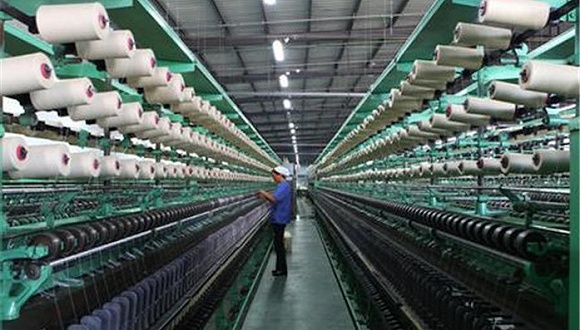Since 2013, the transfer of the industries and orders in China's foreign trade had sped up, which had caused a decrease of USD95 billion in China's exports, according to Zhi Luxun, Deputy Director of Department of Foreign Trade, Ministry of Commerce.

When talking about the traditional competitiveness of China's foreign trade, Zhi stated that, before 2009, the labor cost in China was much cheaper than that in the US. But now, it gets more expensive than the labor cost in Southeast Asia. With the great increase of the labor cost in China in the past few years, it is pretty much the same as that in central and eastern European countries, and getting close to the labor cost in the US.
That's why the orders in China's foreign trade are relocating.
"The traditional competitiveness is weakening' said Zhi. With the exclusiveness from regional trade arrangements and trade friction, the high growth speed in China's foreign trade has slowed down into medium and high growth speed, or even medium growth speed.
2009 was the year for the global trade to change from prosperity to decline. Before 2009, the growth speed of the global trade had always faster than the growth speed of the world's economy. However, after 2009, it had changed reversely.
The current foreign trade is much worse than that in 2009, the year after the financial crisis.
Take Baltic Dry Index, the advanced index for foreign trade, for an example, it has dropped 500 to the lowest 498 in 2015, from the peak 11,793 in 2008.
"The severe foreign trade in 2009 was mainly due to the rapid fall of overseas market demands caused by the international financial crisis' said Zhi. "But the traditional competitiveness in China's foreign trade hadn't changed much in 2009.'
"However, it changes greatly in the past few years.'
"The foreign trade in China has been worsening off, due to the small demand both aboard and home, the slowdown speed of investment in fixed assets, difficulties in financing, the currency of RMB and so on.'
Moreover, trade conservatism is also one of the factors to affect the current trading environment. In the past few years, China has become the biggest victim of trade conservatism.
According to Ministry of Commerce, till Nov. 2015, China had seen trade remedy investigations for 73 times from 21 countries and areas, including 58 anti-dumping investigations, 7 countervailing investigations and 8 safeguards. The amount reached to USD6.38 billion.
Under such a circumstance, though the exports in China has decreased 0.3% year on year in the first ten months in 2015, exports in the US has decreased 11.6% year on year, Japan 9.5%, Korea 7.6%, Brazil 16.7% and South Africa 9.2%, according to WTO.
During the economy recovery, the market share of China's goods has increased to 13.2 %, 0.8 percentage point higher than that in 2014 and 2.8 percentage point higher than that in 2010, the end of the 11th five-year plan.
Expenditure Approach used to calculate GDP in China cannot reflect the contributions of foreign trade to the national economy. Zhi stated that, the result of Expenditure Approach is not able to show the contribution from exports and imports to consumption-investment, its benefits to GDP and its contribution to the growth of national economy.
"China's foreign trade had created jobs for about 180 million people and created 18% of the national tax revenues in China' stated Zhi.
During the first eleven months in 2015, the trade surplus of China's goods was USD 539.1 billion. Even it is calculated using the Expenditure Approach, the contribution rate of the goods trade in one year to the international growth is expected to be around 13%, with the China's GDP in a year increasing 6.9% and the growth of goods trade maintaining the current space.
Thanks to foreign trade benefits to China industrial upgrade, innovations of China's system and mechanism and improvement of China's global impact, the State Council of China has published 7 policies to support China's foreign trade in 2015.
The policies succeeded in clearing the fees in exporting and importing. They have reduced the burden of the enterprises with a total amount of USD3.07 billion (RMB20 billion). More than 1,700 catalogs of industrial products have been cut down in the export inspection. The time for approval of export tax rebate has reduced into only 2 workdays.
"The future policies from the Chinese government will not only focus on decreasing the export tax like it used to be' Zhi stated.
"The Chinese government will emphasize on creating a fair competitive environment according to WTO's rules. For example, it will strengthen on clearing the fees in exporting and importing. It will regulate on 126 fees charging that haven't be included in the positive list based on the 100 special researches on the enterprises, wharfs and harbors.'
*This article is a re-edited and translated version by CCM. The original version comes from www.cnchemicals.com/.
If you would like to know more about what's happening in China, please keep following us on CCM Perspective. We will keep you updated about China.